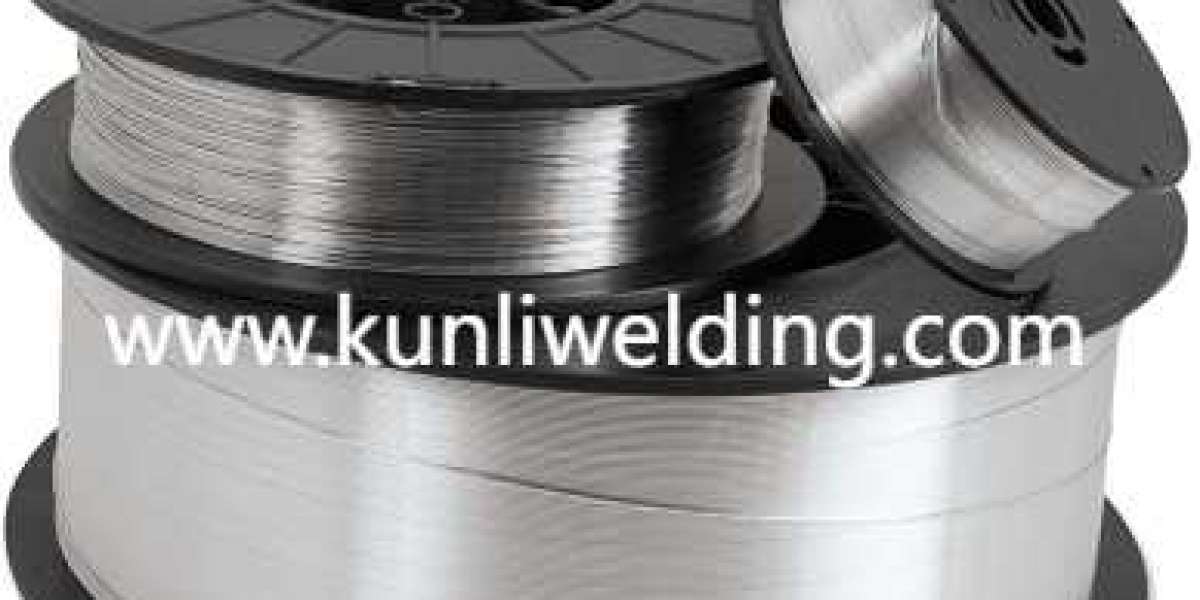Across marine and industrial conversations Aluminum Welding Wire ER5087 often appears when teams need a filler that balances strength with corrosion resistance for welded assemblies. Recent industry emphasis on durable repairs at sea and in coastal facilities has pushed fabricators to refine their TIG and MIG workflows so filler performance is consistent once a coil reaches the dock.
Start with material arrival and quick verification. Inspect spool marking against packing paperwork and examine the coil surface for any signs of moisture or mechanical damage. A brief bench feed test in your actual feeder path checks for bird nest risk and confirms liner compatibility. When procurement specifies protective spool covers and clear labelling inspectors can match the coil to its documentation quickly and begin a meaningful pilot weld rather than spending hours repacking or cleaning.
Cleaning and joint preparation matter for both processes. Aluminum forms an oxide layer that interferes with fusion. Mechanically remove that film with a dedicated brush and use a suitable cleaning solvent where allowed. Maintain a consistent brushing pattern so operators produce repeatable joint surfaces. For visible joints this small step reduces finish work and helps technicians reach acceptable bead appearance in fewer iterations.
Shielding gas stability is a low cost control with big impact. Verify regulator seals tubing connections and nozzle condition at the start of each shift. Inconsistent flow encourages pore formation and undermines arc stability. Keep a routine gas check on the shift checklist and require operators to log any regulator swap so intermittent faults are traceable back to a physical event rather than a subjective complaint.
Feed systems differ between TIG and MIG contexts but smooth feeding is essential in both. For MIG operations ensure your drive rolls liner and spool adapter are matched to the wire form. For TIG wire feedable torches validate stick out and liner geometry during a pilot run. Keep spare liners and simple adapters handy to handle spool type variations without extended downtime. A short feed test under production travel speeds reveals most feeding issues before they interrupt an assembly run.
Heat input control varies by joint and thickness. TIG offers fine control of heat and is often the choice for thin materials or finish critical welds. MIG yields steady deposition for longer seams and higher throughput. For either process avoid excessive heat by using appropriate travel speed and a modest weld pool size. For long seams sequence welds to distribute thermal load and use short tacks so distortion does not concentrate in a single area.
Porosity and cracking are typical faults that respond to disciplined routines. If porosity appears first recheck surface cleanliness and gas delivery. If cracking is present consider fit up quality and joint design. Small design tweaks and a restrained heat plan often remove stresses that enable cracking. Use a pilot sample to test remedial procedures and document settings that produce acceptable results.
Documentation and a short acceptance script accelerate decision making. Capture photos of pilot welds and record feeder and gas settings alongside spool marking. Store that information with the receiving paperwork so subsequent coils are compared against a real shop standard rather than a subjective memory. When a supplier like Kunliwelding publishes product notes and suggested starting parameters those materials provide a useful baseline for your pilot script.
Operator training and short audits sustain consistent practice. Even modest differences in torch angle travel rhythm and stick out influence bead profile and mechanical behavior. Regular quick sessions that refresh cleaning technique and parameter checks help drive uniformity across shifts. Pair training with periodic test welds that the team signs off on so deviations are visible and correctable early.
Packaging and logistics matter under current supply conditions. Coils that endure multiple handling events risk surface scuffs and moisture ingress. Procurement that insists on robust packing and clear spool marking minimizes the chance that a coil is unusable on arrival. When suppliers communicate packaging specs and handling guidance the shop spends less time repacking and more time validating weld performance.
A practical workflow ties these elements together: inspect on arrival, run a bench feed test, perform a short pilot weld under production settings, document the sample with photos and parameter notes, and keep spare feeder parts available. Use supplier product notes and handling guidance as the starting point for your pilot script and adapt settings to your equipment.
For product-specific notes and suggested application guidance consult manufacturer resources and technical material that support pilot planning and acceptance testing. To review product articles and application advice for marine and industrial uses visit www.kunliwelding.com which provides technical news and handling tips you can use to plan trials and set acceptance rules for ER5087 coils.


